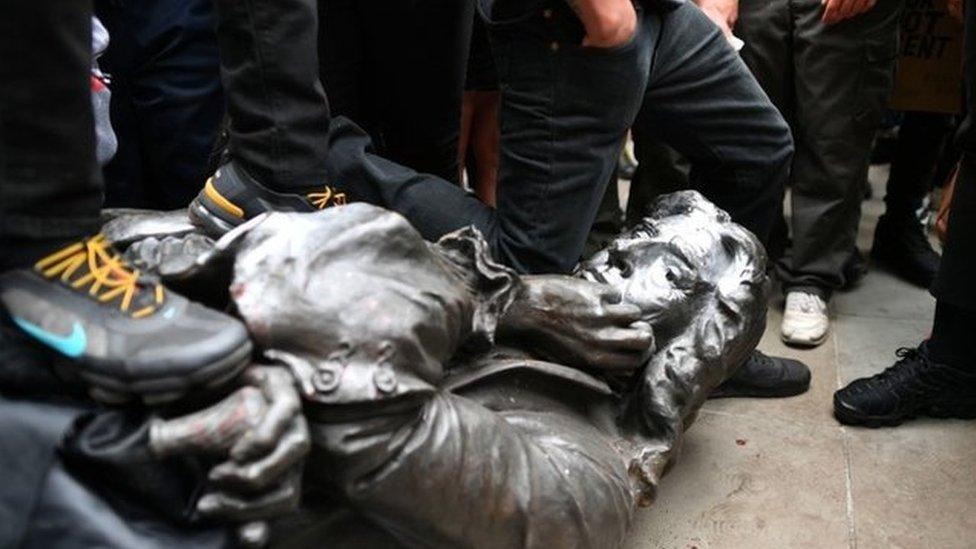Thousands call for Shrewsbury's Clive of India statue to go
- Published
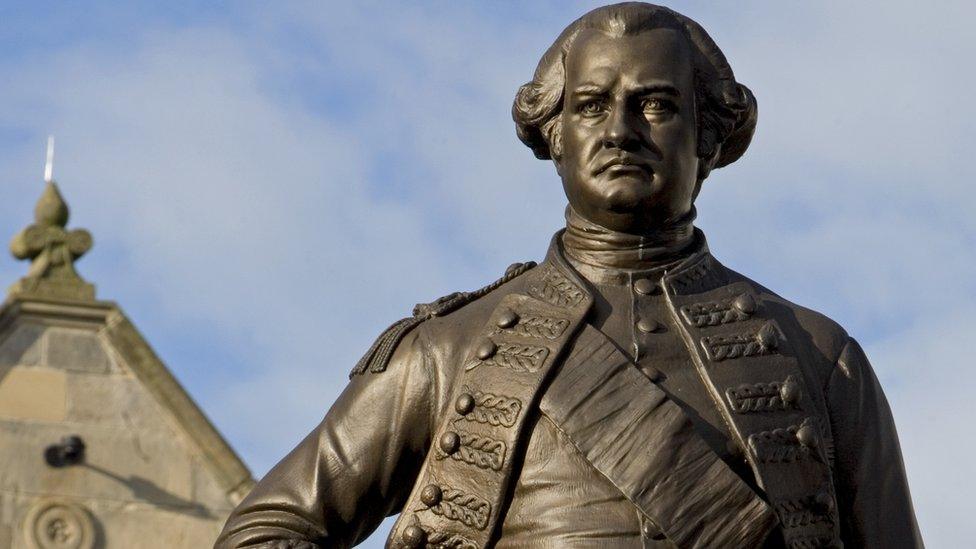
Some people want this statue of Clive of India removed following the toppling of a monument to a slave trader
In Shrewsbury, there's controversy over a statue depicting a figure from Britain's imperial past. Who and what is the row about?
Across the UK, there's been a wave of anti-racism protests following the death of George Floyd, the black American who died in the custody of Minneapolis police. It's seen British people - from a range of ages and backgrounds - march through towns and cities, and at the weekend in Bristol, the toppling of a statue.
It was a monument to slave trader Edward Colston that came down. Protesters described the action as empowering.
In its wake, to the north, a statue in Shrewsbury is at the centre of controversy. Although so far, the approach has been rather more prosaic.
There are two petitions to remove the bronzed figure; an image from Britain's imperial past. The council says it'll be duty bound to consider the argument when a document reaches 1,000 verified signatures. In terms of figures at least, both exceed that total already, with the pair amassing 5,000 names between them and rising.
Who does the statue depict?
Standing in Shrewsbury's Square since 1860, the statue is of Shropshire-born Robert Clive, 1st Baron Clive of Plassey - the anglicised name for the Bengali village, Palashi. He's known by history as Clive of India.
When he reached the nation in the 18th Century, he wasn't part of British government, rather a part of trading enterprise, the East India Company. But he's seen as having engineered British rule there via a key and influential role in the company's private military.
Historian William Dalrymple calls him, external an "unstable sociopath" who managed the London firm's interests overseas.
At the Battle of Plassey in 1757, Clive and his forces defeated the Nawab - or governor - of Bengal. This led to the company controlling the region, then expanding in future years.
Changes the company made to taxes and agricultural policies are said to have led to the Bengal Famine of 1770, where, in certain areas, up to a third of the population died.
Clive, by contrast, returned to England hugely wealthy and served as MP and mayor for Shrewsbury.

Clive served twice as Governor of Bengal
What do campaigners say?
Two petitions have been set up which, between them, have attracted more than 5,000 signatures.
One is entitled "bring down racist Clive statue", the other is headed with a call to replace it.
David Parton is behind the first. He said he launched it to "begin the conversation about everyday racism in the UK".
He said: "Clive stands on a plinth in the centre of The Square, but was central to 200 years of theft [and] misrule that led to thousands of deaths, and eye-watering brutality in large swathes of the Indian subcontinent.
"We think it is now time that we look again at the symbols we value and celebrate and reconsider what our identity in Shrewsbury as [Shropshire people] is and what we are proud of."
Mr Parton's petition adds the statue "embodies" racism and is a "celebration to crimes".
It states: "While this statue is not anti-black racism, it goes some way to illustrate how embedded racism is in the UK.
"If we are not comfortable with a statue of Joseph Stalin or Genghis Khan, how can we be comfortable with a statue of Clive?"
What do scholars say?
Dr. Manu Sehgal, lecturer in South Asian history at University of Birmingham, said the controversies could be used as a platform to educate people about public figures of the past.
Clive "rises and falls, depending on who's looking at him when," he said.
"People use the name [Clive of India], not paying much attention to what he represents in the first place.
"This gives us an opportunity to curate it in such a way that an ordinary person walking past would be able to glance at a statue and be able to interpret it in an appropriate context.
"You don't explain things better by destroying them."
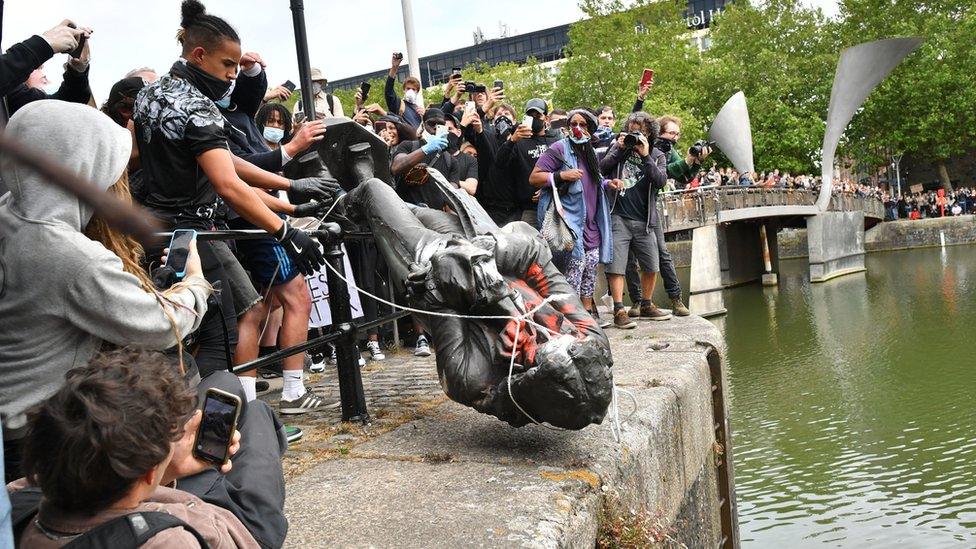
The slave trader statue falls in Bristol
Dr Sehgal added: "As a practising historian, I would argue not to defend or rehabilitate [Clive], but to let understanding him be the ultimate judgement rather than getting rid of him.
"If the aim is to place the Empire on trial, that would really be letting him off the hook.
"The pedestal on which the statue stands could easily take the form of an interrogation box where a witness is made to stand."
What next?
The petitions, which are continuing to attract signatures, are both headed for Shropshire Council.
The council's leader, Peter Nutting, said: "In line with the council's constitution, all petitions that gain 1,000 signatures are presented to, and debated by, full council before the portfolio holder decides what, if any, action to take in response."
Council member Andy Boddington has argued the statue should remain, in line with the thinking of Dr Sehgal.
"If we remove the physical evidence of our sometimes brutal history," he said, "there is a danger that our past will be buried."
The former leader of neighbouring Telford and Wrekin Council, Kuldip Sahota, wants the statue gone.
He was born in India and had a business in Shrewsbury for 20 years, and said when friends came to visit, they felt uncomfortable with Clive's looming likeness.

Follow BBC West Midlands on Facebook, external, Twitter, external and Instagram, external. Send your story ideas to: newsonline.westmidlands@bbc.co.uk , external
- Published8 June 2020
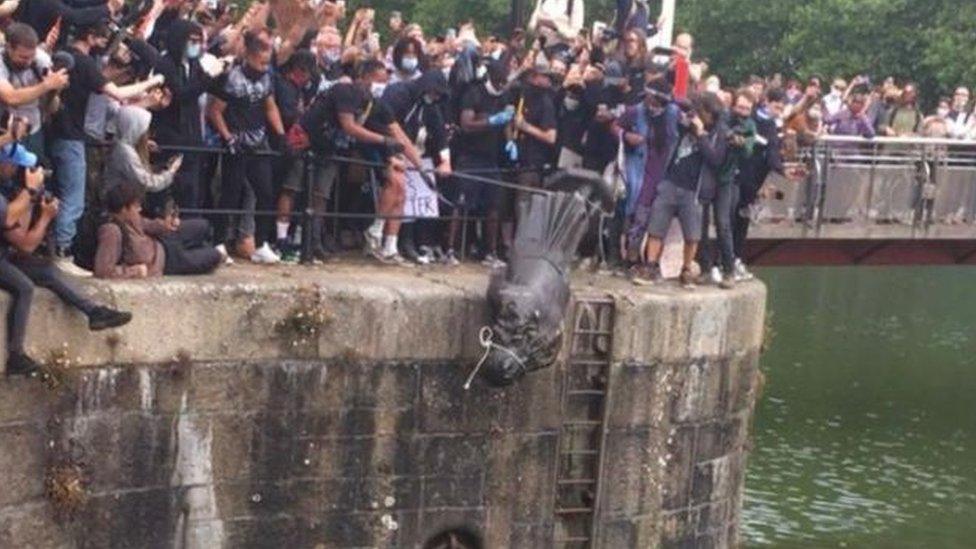
- Published8 June 2020
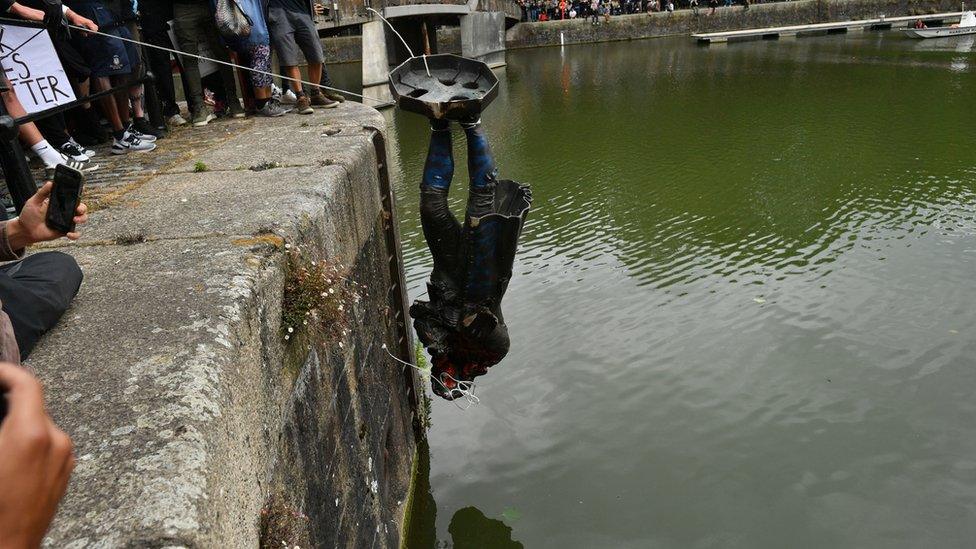
- Published8 June 2020
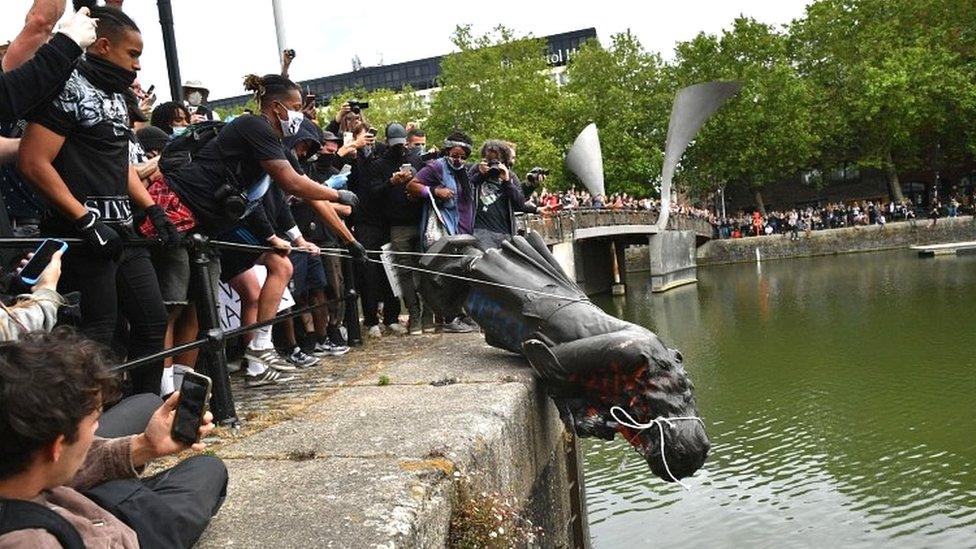
- Published8 June 2020
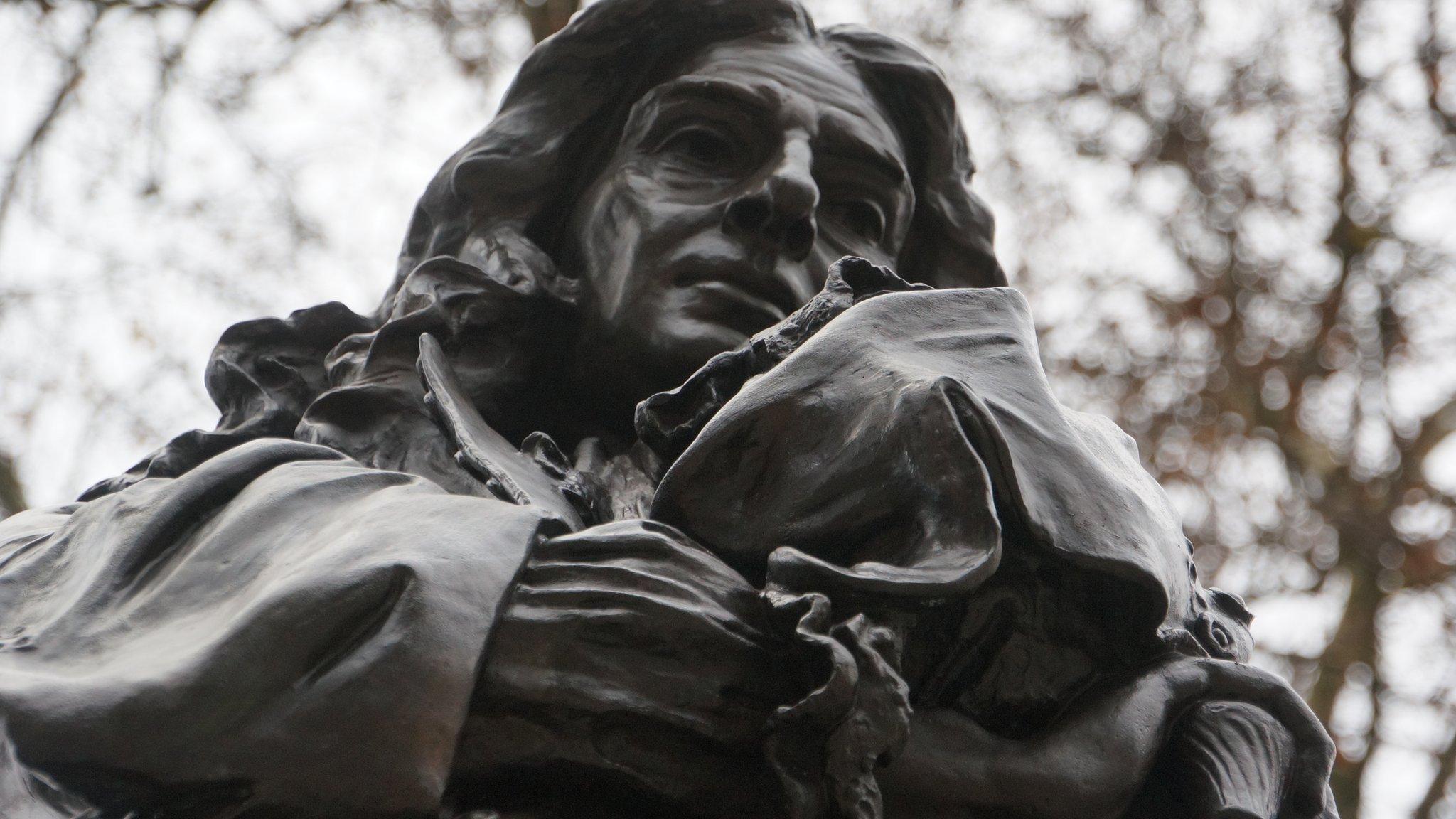
- Published8 June 2020
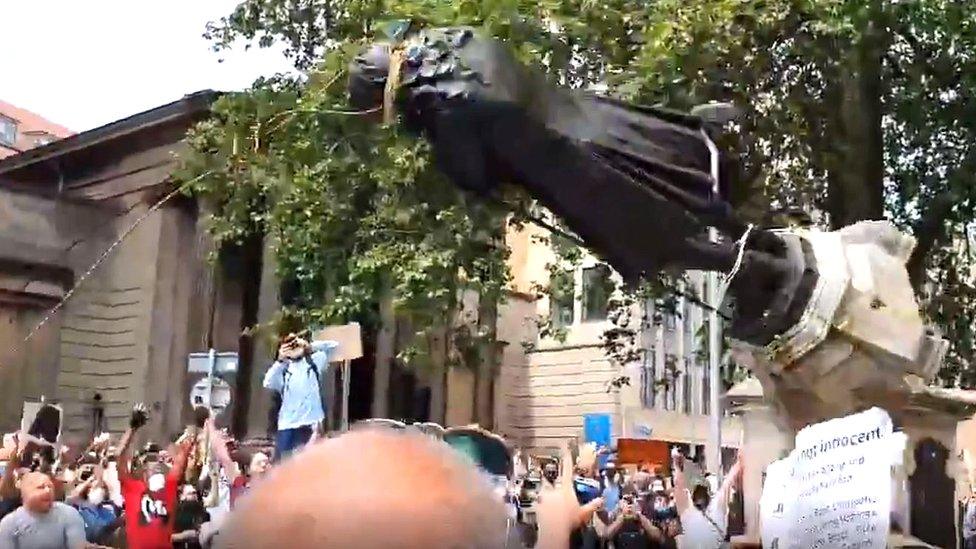
- Published7 June 2020
